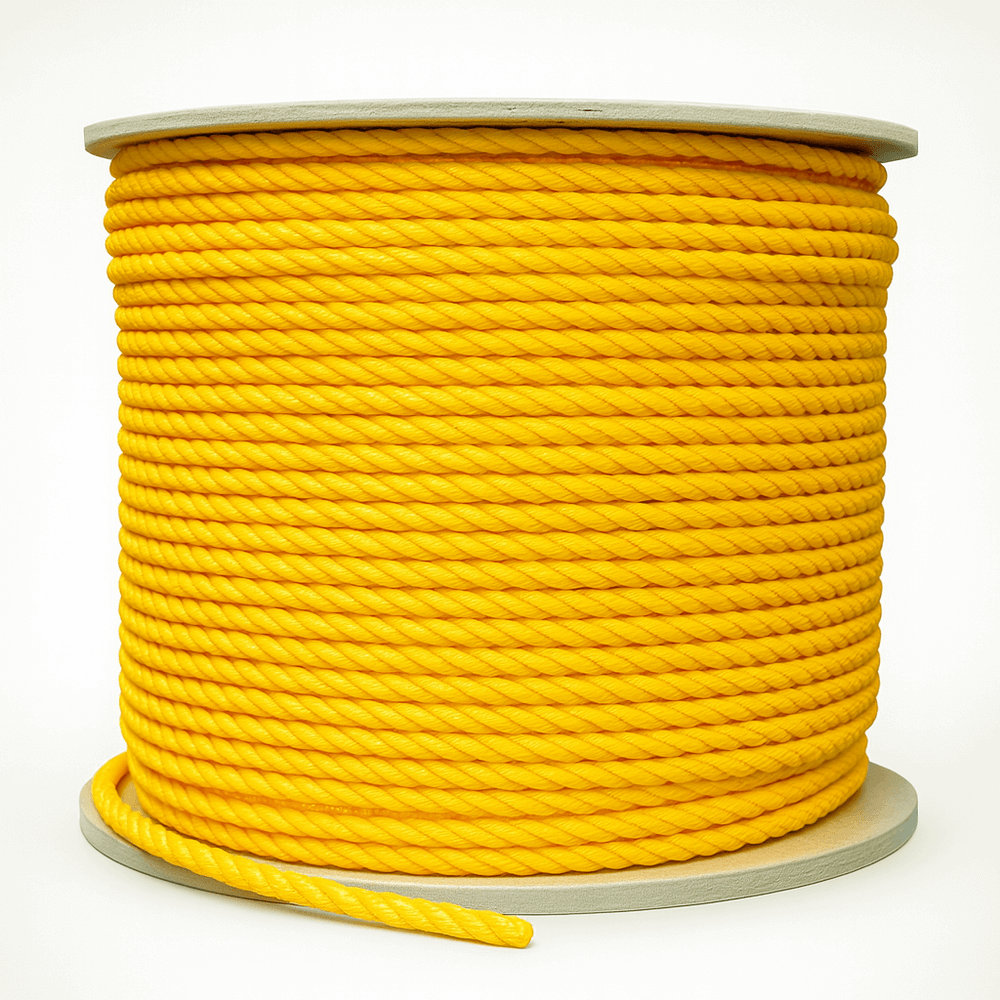
Light Duty Pull Lines
3-strand twisted yellow polypropylene pull line - lightweight and economical
Description: Lightweight yellow polypropylene rope.
Discover US Netting's light duty pulling lines, perfect for residential, small commercial, and low-voltage cable installations.
US Netting's light duty pulling lines offer the perfect balance of strength and economy for everyday cable installations. Made from premium polyester or polyester/polypropylene blends, these lines handle residential wiring, data cables, and control wiring with ease. The lightweight construction and smooth surface make them ideal for shorter runs and frequent use.
Available in solid braid or 3-strand twisted construction. Solid braid offers smooth pulling through conduit, while 3-strand provides better grip and handling. Both feature excellent flexibility for navigating tight spaces and multiple bends common in residential work.
Polyester provides strength and low stretch, while polyester/poly blends offer cost savings with good performance. UV stabilized for outdoor use, resistant to mildew and rot, and safe around electrical equipment due to non-conductive properties.
Romex, branch circuits, and home run cables in typical home construction.
CAT5/6/7 cables, coax, phone lines, and home automation wiring.
Security cameras, doorbell wiring, landscape lighting, and speaker wire.
| Diameter | Tensile Strength | Working Load | Typical Use | Conduit Size |
|---|---|---|---|---|
| 1/8" | 400 lbs | 80 lbs | Single cables | 1/2" - 3/4" |
| 3/16" | 650 lbs | 130 lbs | Small bundles | 3/4" - 1" |
| 1/4" | 1,000 lbs | 200 lbs | Romex runs | 1" - 1.5" |
| 5/16" | 1,500 lbs | 300 lbs | Multiple cables | 1.5" - 2" |
Economical choice for everyday installations
Lightweight and flexible for quick setups
Handles most residential and light commercial needs
Quality construction allows multiple uses
| Single CAT6 cable | 1/8" line |
| 3-4 data cables | 3/16" line |
| 12/2 or 14/2 Romex | 1/4" line |
| Multiple Romex | 5/16" line |
Light duty lines excel in residential and small commercial work where cable weights are moderate and runs are shorter. They offer easier handling and lower cost while still providing reliable performance for everyday installations.
Light duty lines typically have tensile strengths under 2,000 lbs and are designed for residential and light commercial work. Heavy duty lines exceed 2,000 lbs and handle industrial applications.
Yes, it's common practice to leave a pull line for future cable additions. Light duty polyester lines won't degrade in dry conduit conditions.
Quality light duty lines can be reused dozens of times if not damaged. Inspect for cuts, abrasion, or excessive stretch before each use.
A series of half-hitches or a bowline knot work well. For heavier pulls, use a cable sock or basket grip for secure attachment without cable damage.